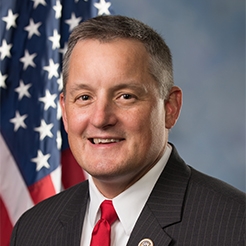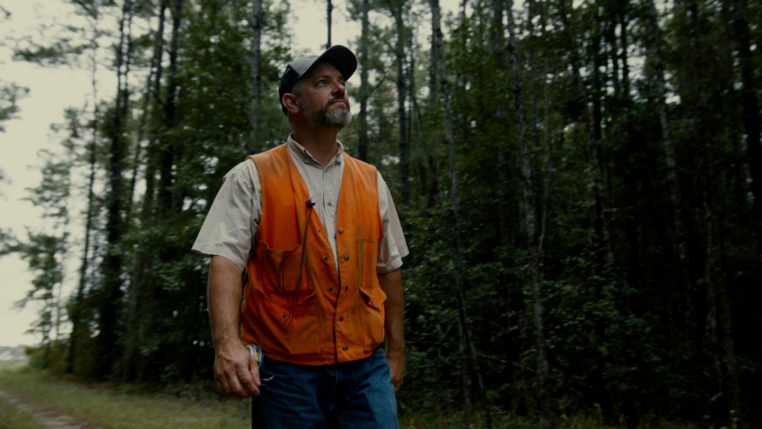A Trillion Trees

The Trillion Trees initiative is getting a lot of press lately. So, I did a little research – and by research, I mean Googled – and found that it is being led by the Wildlife Conservation Society, the World Wildlife Foundation and BirdLife International. Not necessarily organizations that the wood supply chain would see “eye to eye” with at times.
From the Trillion Trees website, www.trilliontrees.org, their vision is “One trillion trees re-grown, saved from loss and better protected around the world by 2050.” That doesn’t sound too bad. Delving deeper into their website, I found the following, “Timber is an extremely valuable, renewable resource that we rely on every day: for buildings and furniture, to provide energy, or transformed into paper for work and study.” We may have more in common with these organizations than I realized.
I recently heard David Tenney, President and CEO of The National Alliance of Forest Owners (NAFO), define relevance as “the overlap between the things one party wants to say and the things another party is interested in.” I think the Trillion Trees initiative could be quite a relevant opportunity.
Last week, Congressman Bruce Westerman of Arkansas introduced the Trillion Trees Act. It’s a bill that FRA can get behind. For more detail, the following is an opinion piece the Congressman wrote for Fox News regarding his bill:
Take a moment to think back to your eighth-grade science class. Do you remember painstakingly coloring in the diagram of a plant cell? Words like “mitochondria” and “ribosome” may bring back vivid memories of trying to cram everything in the night before a test. But there’s one particular part of a cell upon which every ecosystem in the world depends: the chloroplast. Right now, countless billions of chloroplasts in trees across the world are turning water, sunlight and carbon dioxide into plant food and releasing oxygen back into the atmosphere.
Why is any of this important? Because this common, everyday occurrence is the most advanced carbon-capture device we have. The carbon that leaf cells are pulling from the atmosphere remains in the tree, even after it’s cut down and used for wood products like furniture, building materials and more.
We are at a point in history where we need a bold goal to focus our efforts on being the best stewards of our environment. That’s why I’m proposing that we lead the world in planting 1 trillion trees globally by 2050.
My bill – the Trillion Trees Act – is a three-pronged approach:
1) Plant more trees in urban areas and on marginal agriculture land domestically while offering technical support and assistance for other countries to maximize forest growth internationally and reverse deforestation.
2) Grow more wood in our existing forests and make them more resilient to insects, diseases and catastrophic wildfires.
3) Store more carbon by incentivizing innovative building practices with a sustainable building tax credit, while offsetting some fossil fuel use by capturing the energy in renewable biomass fuel.
This idea stems from a 2019 Swiss report featured by the American Academy of the Advancement of Science that estimated planting 1 trillion trees could sequester 205 gigatonnes of carbon worldwide. That’s the equivalent of two-thirds of all manmade carbon since the Industrial Revolution.
Trees are much more powerful than people assume. Codifying an aggressive planting goal into law is the most natural, pragmatic and economical approach. And as it turns out, planting a trillion new trees is not out of reach. According to statisticians, planet earth is currently home to 3 trillion trees, with about 10 percent of those trees growing in the U.S. We’re already planting 2.5 billion new trees in the U.S. each year, so we could plant our fair share over that 30-year window by increasing the yearly U.S. planting to 3.3 billion. It’s aggressive, but doable.
But we can do more. Actually, we can do much more. While our planet has limited available space for forests, there is no limit to how much carbon trees can pull from the atmosphere and store, both in forests and in wood products. In fact, 40-50 percent of dry wood by weight is carbon. Think of forests, wood buildings and other wood products as an above-ground storage system for carbon that was once stored in coal seams and oil reservoirs.
While our goal is to plant a trillion trees, the bill is about more than just planting and preventing deforestation. We need to simultaneously be harvesting billions of trees and manufacturing that wood to fully utilize forests’ capacity to remove and store carbon. It may seem counterintuitive, but we know it’s possible to sustainably harvest timber while increasing the amount of forests. It’s happening all around us in the United States today, where our total forest volume is increasing even as our use of wood products grows. In my home state of Arkansas, we’re replanting four trees for every one tree that we harvest, and the amount of standing timber significantly increases every year.
The benefits of this approach are numerous: reforesting deforested and urban areas, increasing the amount of carbon-carrying capacity, protecting old-growth forests from catastrophic deforestation events and experiencing the added benefits of healthy, vibrant forests. All of this can be done in a positive way that not only benefits the environment but also the economy, especially rural economies in which forests are often located.
This is not the bill that does everything, but it’s the bill that does the most. Using trees as a carbon sequestration device is a proven concept that’s reliable and efficient. Now it’s our responsibility to teach future generations how to grow healthy forests. We have both a literal and a metaphorical opportunity to fulfill the Greek proverb that states, “A society becomes great when old men plant trees in whose shade they know they shall never sit.”


